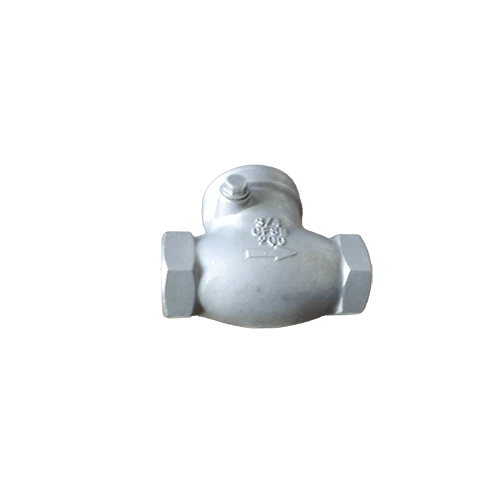Mobile:+86-311-808-126-83
Email:info@ydcastings.com
aluminum gravity die casting manufacturer
Understanding Aluminum Gravity Die Casting and Its Manufacturers
Aluminum gravity die casting, an essential manufacturing process, is widely used in producing complex aluminum components. This technique combines the durability of aluminum with the precision needed for intricate designs, making it a favored choice in various industries. This article explores the significance of aluminum gravity die casting, the process involved, and what to consider when choosing a manufacturer.
What is Aluminum Gravity Die Casting?
Aluminum gravity die casting is a procedure where molten aluminum is poured into a metal mold, also known as a die. The die is designed to hold its shape under pressure, allowing for the creation of highly detailed and dimensionally accurate parts. Unlike other methods like sand casting, this process uses gravity to move the molten metal, which fills the mold under its weight. This technique is particularly suitable for producing large volumes of parts with excellent surface finishes and tight tolerances.
Advantages of Aluminum Gravity Die Casting
1. Cost-Effectiveness Although the initial investment in die casting tools can be higher than other casting methods, the overall cost per part decreases significantly when producing large quantities. This is because the high production rates lead to lower unit costs.
2. Precision and Consistency One of the primary advantages of gravity die casting is its ability to create consistently accurate parts. The metal molds provide precise dimensions and surface finishes, minimizing post-processing work.
3. Material Properties Aluminum is known for its lightweight yet durable characteristics. Parts made from aluminum gravity die casting are often stronger and more resistant to corrosion than those produced by other methods.
4. Complex Geometries The process allows for the creation of complex shapes and designs that would be challenging to achieve with other manufacturing techniques.
5. Environmentally Friendly Aluminum is recyclable, and many manufacturers prioritize sustainable practices, ensuring that their die casting processes are environmentally conscious.
The Aluminum Gravity Die Casting Process
The process begins with the melting of aluminum alloy in a furnace. Once the aluminum is molten, it is poured into the pre-heated die. The design of the die is crucial, as it influences the quality of the final product. After the mold is filled, the aluminum cools and solidifies. Once cooled, the die is opened, and the finished part is ejected.
There are several critical steps involved in this process
aluminum gravity die casting manufacturer

1. Die Design and Fabrication The quality of the die directly impacts the quality of the final product. Designers must consider factors such as shrinkage, thermal expansion, and fluid dynamics in aluminum flow.
2. Melting and Pouring achieving the right temperature and pouring technique is essential to ensure the aluminum flows smoothly into the mold.
3. Cooling and Ejection After the aluminum solidifies, the die must be cooled adequately to prevent distortion when parts are removed.
4. Post-processing Although gravity die casting produces high-quality parts, some may require further machining, surface treatment, or finishing to meet specific requirements.
Choosing the Right Manufacturer
When selecting an aluminum gravity die casting manufacturer, several factors should be considered
1. Experience and Expertise Look for manufacturers with a proven track record in die casting. Their experience will influence the quality of your products.
2. Quality Assurance Ensure the manufacturer has robust quality control processes in place, using the latest technology and standards to guarantee the accuracy and integrity of their products.
3. Customization Capabilities Depending on your needs, choose a manufacturer who can offer customization options for your designs.
4. Technology and Equipment Modern manufacturing facilities should be equipped with advanced machinery and technologies, enabling faster production times and more intricate designs.
5. Customer Support Choose a partner that offers strong communication, from initial design consultations through to production and delivery, ensuring your project's success.
Conclusion
Aluminum gravity die casting is a vital manufacturing technology that brings together precision, efficiency, and the lightweight properties of aluminum. By understanding the process and carefully selecting a manufacturer, businesses can unlock the potential of this technique to produce high-quality components for a variety of applications. Whether in automotive, aerospace, or general manufacturing, aluminum gravity die casting continues to be a preferred method for creating complex and durable parts that meet the demands of modern engineering.
-
Understanding Metal Casting TechniquesNewsApr.02,2025
-
Understanding Exhaust Manifolds for Enhanced Engine PerformanceNewsApr.02,2025
-
The World of Metal FabricationNewsApr.02,2025
-
Key Components for Pump and Turbo EfficiencyNewsApr.02,2025
-
Essential Tools for Automotive Maintenance and RepairNewsApr.02,2025
-
Durable Valve Components for Effective Water ManagementNewsApr.02,2025











